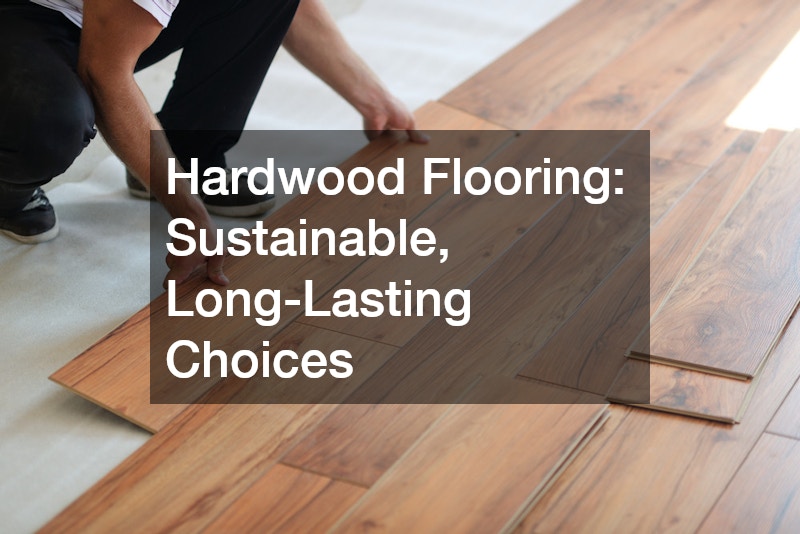
Home improvement trends are increasingly focusing on sustainability, as homeowners seek to blend eco-consciousness with style. Eco-friendly home improvements not only reduce environmental impact but also enhance comfort and home value. Whether you’re aiming to lower energy consumption, reduce utility bills, or create a healthier living space, there are many ways to integrate sustainable solutions into your home. Below, we’ll explore some of the most popular and actionable home improvement trends that merge sustainability with modern design, offering you valuable insights to elevate your home.
1. Protecting Your Green Investments

When embarking on eco-friendly home improvements, one of the first considerations should be how these changes will impact your home insurance policy. Many homeowners are unaware that adding green upgrades can influence both the cost and coverage of their insurance. Upgrades such as installing solar panels, energy-efficient windows, or a new eco-friendly roof may reduce the likelihood of damage, potentially leading to lower insurance premiums. For example, homes with solar panels or a rainwater collection system could be less vulnerable to storm damage, which might result in fewer claims and reduced risk for insurers.
In addition to making your home more energy-efficient, certain green upgrades could directly influence your insurance rates. Features like high-end solar roofing or wind-resistant elements may be seen as risk-reducing improvements by some insurers. These upgrades could protect your home from extreme weather events, thus decreasing the likelihood of damage. Consequently, these kinds of eco-friendly investments might make your property less of a risk to insure, making them valuable from both a financial and protective standpoint.
It’s important to take action and contact your home insurance provider after making any major green improvements. Many insurers offer discounts or lower premiums for homes with energy-efficient features, and they may need to update your policy to reflect these upgrades. Keeping your insurer informed ensures that any changes made to your home are covered under your current policy, and it may also help you save money in the long run.
2. Choosing Green Building Materials
One of the most effective ways to create an eco-friendly home is by selecting sustainable building materials, and home builders play a crucial role in making this happen. Whether you’re constructing a new home or renovating an existing one, the materials you choose can significantly impact both the environment and the long-term efficiency of your home. Builders who specialize in sustainable construction practices can guide you in sourcing materials that align with your eco-friendly goals. For example, opting for reclaimed wood, bamboo, or eco-friendly insulation materials like cellulose or recycled denim can help reduce your home’s environmental footprint.
When embarking on a new build or renovation, it’s important to collaborate with home builders who prioritize sustainability. By working with experts, you can ensure that materials are responsibly sourced and that your project is designed with sustainability in mind. Requesting materials such as FSC-certified wood (from responsibly managed forests) or reclaimed stone can ensure that your home is built with the environment in mind. Additionally, choosing eco-friendly insulation options like recycled denim can enhance your home’s energy efficiency while reducing its carbon footprint.
Home builders can also help design your home to be energy-efficient from the ground up. For example, thermal mass construction uses materials that absorb and gradually release heat, maintaining a comfortable temperature throughout the year. By incorporating this design strategy, your home can reduce the need for heating and cooling systems, leading to lower energy consumption and a smaller carbon footprint.
3. Architecture and Design Firms: Sustainable, Modern Design

Working with architects and design professionals who specialize in eco-friendly home design is crucial for successfully integrating sustainable solutions into a stylish, modern home. Architecture and design firms that focus on sustainability can help you seamlessly incorporate green features like passive solar heating, natural lighting, and green roofs without sacrificing aesthetic appeal. By selecting sustainable materials and employing smart design strategies, these firms can create a home that is both energy-efficient and visually striking, blending modern style with environmental responsibility.
When designing a home with sustainability in mind, it’s essential to collaborate with an architecture and design firm experienced in energy-efficient design principles. A skilled architect or designer can guide you in maximizing natural light, reducing the need for artificial lighting, and helping to lower energy consumption. They can also recommend using thermal mass materials—such as concrete or stone—that absorb and store heat during the day and release it at night, keeping the home comfortable year-round. Proper insulation is also vital to minimize energy use by reducing heat loss. Additionally, green roofs, which are increasingly popular in sustainable design, provide not only insulation but also space for growing plants, contributing to both energy efficiency and environmental sustainability.
Eco-friendly home design goes beyond aesthetics; it’s about creating a living space that lowers energy consumption while maximizing comfort. Architecture and design firms focused on sustainability can select materials like bamboo or reclaimed wood that enhance the look of your home while minimizing its environmental impact. The use of eco-conscious construction methods can lead to a home that’s not only energy-efficient but also healthier and more comfortable to live in.
4. Solar Roofing: Harnessing the Power of the Sun
Solar roofing has come a long way from the traditional solar panels mounted on top of a roof. Today, homeowners can choose from sleek, integrated solar roof tiles or shingles that blend seamlessly with their home’s architecture, offering both aesthetic appeal and energy efficiency. These advanced solar roofing options are designed to generate electricity while reducing the home’s carbon footprint, making them an attractive choice for eco-conscious homeowners.
One of the key factors in maximizing the efficiency of solar roofing is the orientation of your roof. To optimize sunlight exposure, it’s essential to consider the angle and direction of your roof when installing solar panels or solar roof tiles. Generally, a south-facing roof will capture the most sunlight and produce the most energy throughout the day. However, recent innovations in solar technology have made it possible to capture solar energy from a variety of angles, allowing homeowners with roofs that are not perfectly oriented to still benefit from solar power.
Investing in solar roofing reduces dependence on traditional power sources and can lower your electricity bills. In many cases, excess energy can even be sold back to the grid, creating a potential source of income or savings.
5. Hardwood Flooring: Sustainable, Long-Lasting Choices

Hardwood flooring has long been celebrated for its timeless beauty and durability, but traditional hardwood options can have a significant environmental impact due to deforestation and slow growth cycles. Today, homeowners are increasingly turning to more sustainable flooring choices, including reclaimed wood and bamboo. Bamboo, in particular, stands out as an eco-friendly option because it is a rapidly renewable resource. Unlike hardwood trees, bamboo grows quickly, does not require replanting, and absorbs carbon dioxide at a much higher rate, making it a highly sustainable choice for flooring.
When choosing flooring materials, opting for those made from FSC-certified wood or reclaimed wood can help reduce the impact on forests. The Forest Stewardship Council (FSC) certification ensures that wood is sourced responsibly, with minimal environmental harm. For a modern and stylish twist, consider bamboo or cork flooring, both of which are renewable and offer a unique aesthetic appeal. Bamboo, in particular, has become increasingly popular due to its durability, versatility, and eco-conscious qualities, making it an excellent choice for sustainable home design.
In addition to selecting sustainable materials, it’s also essential to consider the type of finish applied to your flooring. Traditional hardwood floors are often treated with toxic chemicals that can emit harmful fumes, impacting indoor air quality. To mitigate this, look for low-VOC (volatile organic compounds) or non-toxic finishes for your flooring. These eco-friendly finishes are widely available and offer a safer, healthier alternative to traditional treatments, ensuring that your home remains both beautiful and environmentally responsible.
6. Modern Kitchen: Eco-Friendly Appliances and Designs
The kitchen is often considered the heart of the home, and it’s also one of the areas where eco-friendly upgrades can have a significant impact. By making sustainable choices in your kitchen, you can reduce both your energy consumption and environmental footprint. Installing energy-efficient appliances such as Energy Star-rated refrigerators, dishwashers, and stoves can lower your energy bills while helping to reduce your home’s overall energy use. These appliances are designed to consume less energy, making them a smart choice for those looking to enhance sustainability in their home.
In addition to energy-efficient appliances, there are several other ways to make your kitchen more eco-friendly. Installing low-flow faucets and water-efficient dishwashers can help reduce water usage, which is particularly important in regions facing water scarcity. Faucet aerators, which mix air with the water stream, can reduce water flow without sacrificing performance. Upgrading to a low-flow showerhead or an efficient dishwasher also contributes to water conservation while maintaining the functionality of your kitchen.
For a sustainable kitchen design, consider using recycled and sustainable materials for your countertops. Materials like glass, concrete, and recycled stone not only offer a unique, modern look but are also eco-friendly options that reduce waste and promote sustainability. These countertops are durable and easy to maintain, making them both functional and stylish choices for any kitchen.
In the modern kitchen, you don’t have to sacrifice style for sustainability. By choosing energy-efficient appliances, water-saving features, and eco-friendly materials, you can create a functional, energy-efficient space that reflects your commitment to sustainability without compromising on design or aesthetics.
7. Painting Contractors: Eco-Friendly Paints for a Healthier Home
Paint is one of the most affordable and transformative ways to update the look of your home, but traditional paints often contain harmful chemicals that can negatively impact indoor air quality. Conventional paints typically contain volatile organic compounds (VOCs), which can off-gas toxic fumes, affecting both your health and the environment. To create a healthier, more eco-friendly home, consider using low-VOC or VOC-free paints. These alternatives emit fewer toxins into the air, providing a safer environment for both you and your family.
When choosing paint for your home, it’s important to prioritize eco-friendly options. Look for paints that are free from volatile organic compounds (VOCs), which are known to contribute to air pollution and health issues such as headaches, dizziness, and respiratory problems. Another great option is natural paints, which are made from non-toxic ingredients like clay, chalk, or milk. These paints not only provide a unique, natural finish but are also safe for both your health and the environment. When planning to update your space, working with professional painting contractors who specialize in eco-friendly materials can help guide you in selecting the best sustainable options for your home.
Painting with eco-friendly products not only enhances your home’s appearance but also contributes to better indoor air quality, ensuring that your living space is both beautiful and breathable. By hiring painting contractors who are knowledgeable about eco-friendly paints and finishes, you can rest assured that your home will be updated sustainably and with your health in mind. This simple yet effective upgrade helps to promote a healthier home environment while also supporting sustainable practices.
8. HVAC Professionals: Energy-Efficient Heating and Cooling
Heating and cooling systems are among the largest energy consumers in a home, accounting for a significant portion of energy bills. As such, upgrading to an energy-efficient HVAC system can make a big difference in both reducing energy costs and minimizing your carbon footprint. Modern systems, such as heat pumps, are particularly beneficial as they provide both heating and cooling, making them a versatile and eco-friendly option for homeowners looking to improve their home’s energy efficiency. Heat pumps use electricity to transfer heat, rather than generating it by burning fuel, which reduces energy consumption and lowers emissions.
To ensure your energy-efficient HVAC system continues to perform optimally, regular maintenance is essential. This includes simple tasks such as changing air filters, which can improve airflow and system efficiency, and cleaning ducts to remove dust and debris that may hinder performance. Scheduling annual inspections with professional HVAC professionals can also help identify and address any potential issues before they lead to system failures or inefficiencies. HVAC professionals can assess the overall health of your system, ensuring that it continues to run efficiently and effectively for years to come.
Incorporating an energy-efficient HVAC system into your home ensures that you’re not only saving money but also taking an important step toward creating a more sustainable living space. By working with HVAC professionals to maintain your system, you can achieve both comfort and efficiency, making your home a more eco-friendly and cost-effective place to live.
9. In-Ground Swimming Pool Contractors: Sustainable Pool Designs
In-ground swimming pools, while a luxurious addition to any home, can be a significant energy drain, especially when it comes to heating, filtering, and lighting. However, there are several eco-friendly ways to make your pool more sustainable and reduce its environmental impact. Upgrading to energy-efficient pool pumps, heaters, and LED lighting is a great place to start. Energy-efficient pool pumps use less electricity to circulate water, while LED lighting consumes far less energy than traditional pool lights, providing the same level of illumination without the added environmental cost.
For those looking for a more natural and chemical-free swimming experience, natural swimming pools are an excellent option. These pools use biological filtration systems instead of chlorine to clean the water, creating a chemical-free swimming environment. These systems rely on plants and natural filters to maintain water clarity, reducing the need for harsh chemicals and lowering the environmental impact of pool maintenance. While the initial setup may be more expensive, the long-term environmental and health benefits make natural swimming pools a great choice for eco-conscious homeowners. If you’re considering such a pool, working with in ground swimming pool contractors who specialize in sustainable designs can help ensure that your pool is built efficiently and with the best eco-friendly options in mind.
10. Fence Contractors: Eco-Friendly Fencing Solutions
When building a new fence, choosing sustainable materials can make a significant difference in reducing your environmental impact. Traditional wood fences, while common, often require constant maintenance and may not be the most durable option. By opting for eco-friendly materials like bamboo, composite materials, or recycled wood, homeowners can build a fence that is not only sustainable but also long-lasting and low-maintenance. Bamboo, for example, is a fast-growing, renewable resource that is both strong and flexible, making it an ideal alternative to traditional wood. Composite materials, often made from a blend of recycled plastic and wood fibers, offer durability and resistance to weathering without the need for frequent repairs.
An actionable tip when building an eco-friendly fence is to use non-toxic, eco-friendly paints or sealants to protect your fence from the elements. Conventional paints and sealants can contain harmful chemicals that leach into the soil and water, but eco-friendly options are available that ensure your fence is protected without introducing harmful toxins into the environment. These non-toxic products not only safeguard the materials but also help maintain the integrity of your home’s outdoor environment. To ensure that the fence is installed properly and with the right materials, it’s important to consult with experienced fence contractors who specialize in sustainable fencing solutions.
Fences made from recycled materials, such as plastic or metal composites, offer another sustainable alternative. Estimates suggest that up to 60% of the material used in composite fences is made from recycled content, helping to divert waste from landfills and reducing the demand for new raw materials. By choosing a fence made from recycled materials, you’re contributing to the circular economy and promoting sustainability in your home’s construction. Working with fence contractors who are knowledgeable about sustainable materials ensures that your fence is built to last while minimizing its environmental footprint.
As homeowners continue to prioritize sustainability, the trend of blending eco-friendly solutions with stylish, modern design will only grow. Whether you’re upgrading your HVAC system, installing solar panels, or working with a design firm that specializes in sustainable materials, the opportunities for improving your home’s efficiency and style are abundant.
By integrating these green home improvement trends, you’ll not only enhance the look and comfort of your home, but you’ll also contribute to a more sustainable future. Sustainable home improvements may require an upfront investment, but the long-term savings, environmental benefits, and increased home value make them a wise choice for the modern homeowner.
So, why not start planning your eco-friendly upgrades today and create a home that’s both stylish and sustainable for years to come?
